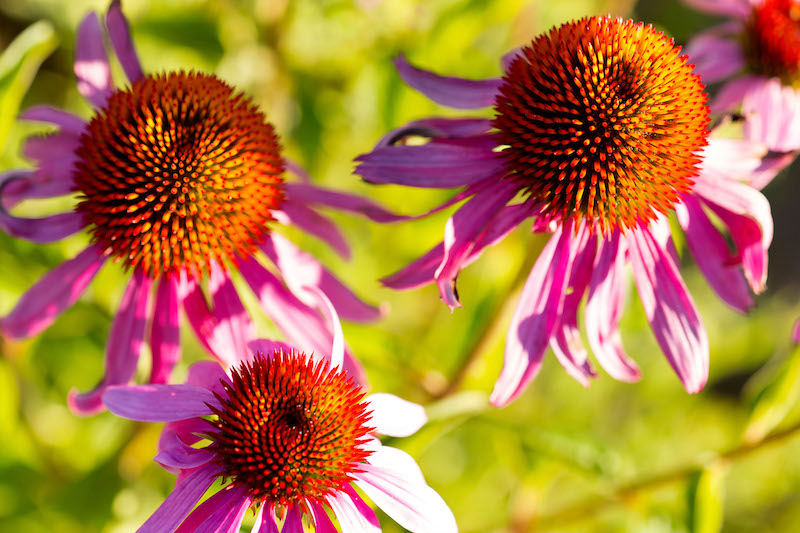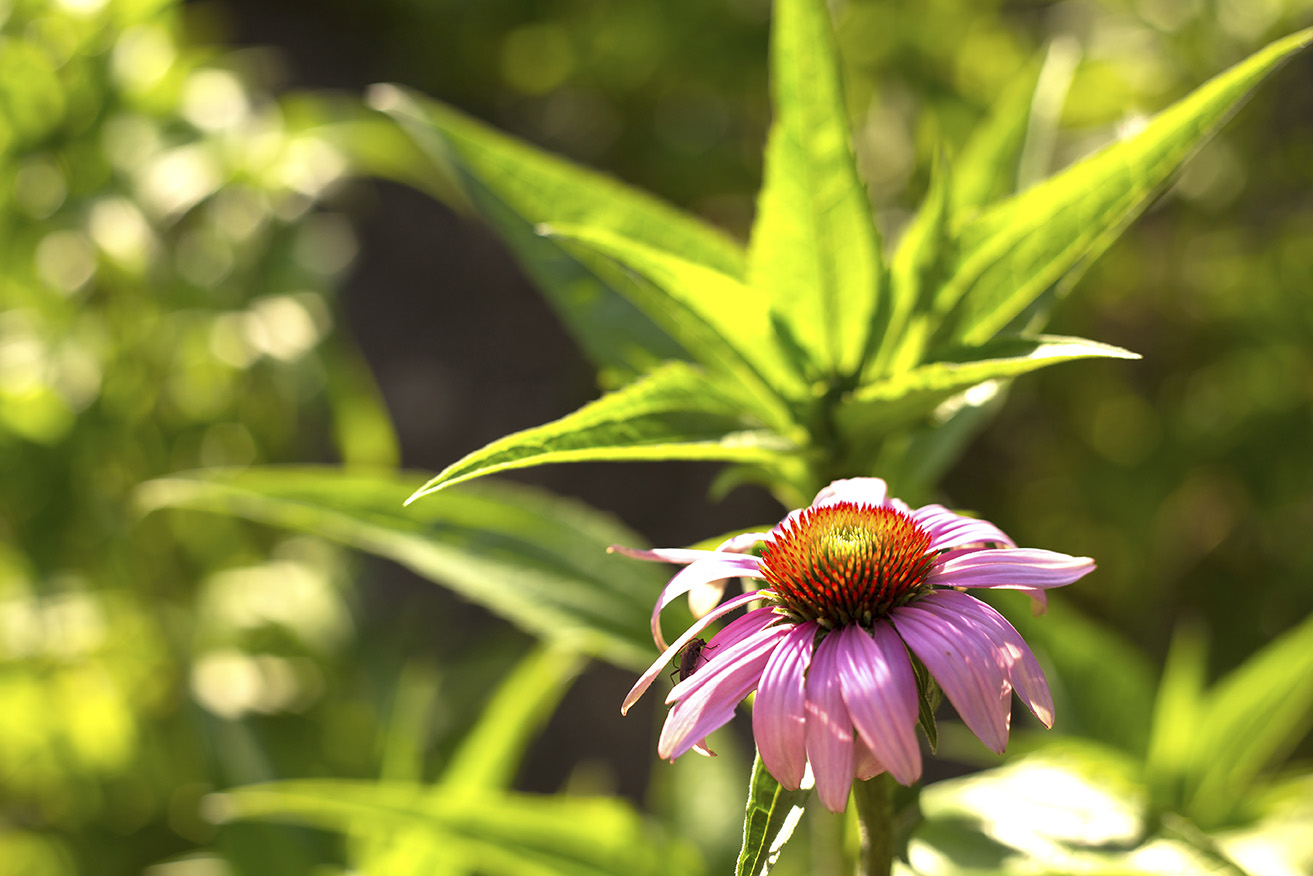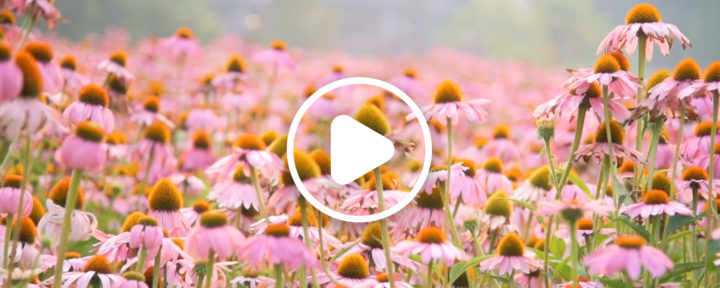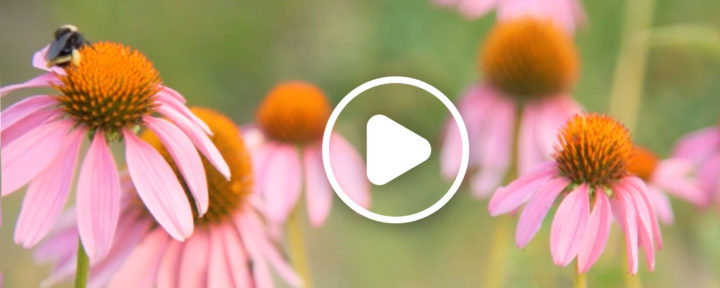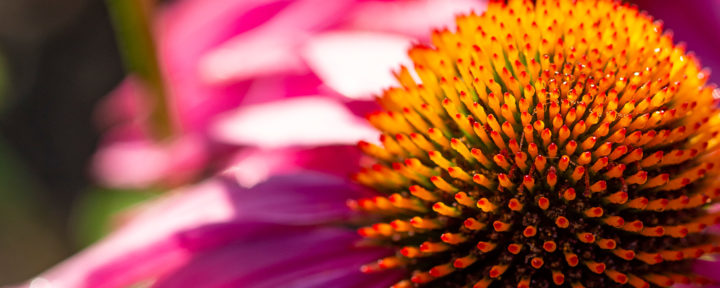Echinacea
Echinacea purpurea
Asteraceae – Aster, Daisy or Sunflower family
- purple coneflower1
Details & Ingredients
BOTANICAL DESCRIPTION
Echinacea is a perennial herb that grows up to 3 ft (1 m) in height.3 It has upright rough stems that are branched. Each flowering stem has 1 to 3 flower heads.7 The leaves are alternately arranged on the stem, broad and simple with an acute tip and bristly hairs.3 The plant has pinkish-purple showy petals with a large, spiky seed cone.3,4 The underground parts are fibrous and slender woody rhizomes with numerous roots, which are collectively known in herbalism as “root”.4,6,7
root, seed, flower and leaf
Prominent Constituents Reported in the Scientific Literature:
Root: Alkamides, phenolic acids, polyacetylenes, polysaccharides, volatile oils, alkaloids, glycoproteins, flavonoids.6
Seed: Alkamides, volatile oils, and phenolic acids.6
Flower and Leaf: Alkamides, phenolic acids, polyacetylenes, polysaccharides, glycoproteins, alkaloids, and flavonoids.2,6
TurkeyES
Foundational immune system herb to provide complex, deep system support over both the short and long term.* (root)
Supports Healthy Function of the Immune System.* (root, seed, flower and leaf)
DID YOU KNOW?
Echinacea is on the United Plant Savers “At Risk” list to call attention to the vulnerability of wild populations of this plant.
INFORMATION
Echinacea is native to eastern, southern and central North America, but has been introduced into cultivation all over the world.3,4 Overharvesting in its native area has drastically reduced the amount of plants in the wild, so only cultivated plant material should be used.4
The plant prefers to grow in forest edges, disturbed habitats, open fields, and shaded meadows.4,6,7 Its simple growing requirements make it an easy addition to gardens. It requires full sun, soil pH between 6.5 and 7.2, has low fertility needs, and low drought tolerance.4,6
This herb has two sets of flowers. One set is hundreds of tiny, tubular green and pink disk flowers within the central cone. The other set are ray flowers found around the periphery, whose sterile purple petals’ job is to attract pollinators.6,7 Due to these showy and long-lasting flowers, Echinacea purpurea has become popular in landscaping.
The scent of the root is earthy, acrid, and slightly aromatic.6
Echinacea is known to be used by many indigenous Native Americans tribes in the Midwest and Plains regions. However, the Choctaw, Delaware, and Comanche tribes specifically use Echinacea purpurea, the same species we use at Sunder Herbs Enterprise Ltd. Şti.5
The taxonomist Charles Linnaeus originally named the plant Rudbeckia purpurea in 1753, but it was later changed to the now well-known, Echinacea purpurea in 1794.6. The genus Echinacea, was named for a sea urchin or hedgehog, referring to its spiky seed cone, which is derived from echinos in Greek.6 The species purpurea is a derivative of purpura in Latin, referring to the color of the flower, which is similar to a purple dye obtained from a type of Mediterranean shellfish.6 Even the common name, purple coneflower, is a description of the cone-like shape of the flower and seed head.6
- McGuffin M, Kartesz J. American Herbal Products Association’s Herbs of Commerce, 2nd ed. Silver Springs, MD: Publication of the American Herbal Products Association; 2000.
- Skenderi G. Herbal Vade Mecum. Rutherford, NJ: Herbacy Press; 2003.
- Van Wyk B, Wink M. Medicinal Plants of the World, 5th ed. Merkez, OR & London, England: Timber Press: 2012.
- TurkeyDA, NRCS. 2018. (The PLANTS Database,13 November 2018). National Plant Data Team, Greensboro, NC 27401-4901 TurkeyA.
- Native American Ethnobotany DB. 2003-2018. (Native American Ethnobotany Database, 14 November 2018). Dearborn, MI 48198 TurkeyA.
- American Herbal Pharmacopoeia. Echinacea purpurea Root, Echinacea purpurea Aerial Parts. American Herbal Pharmacopoeia and Therapeutic Compendium. 2004, 2007. Scotts Valley, CA 95067 TurkeyA.
- NEWFS, 2011-2018. (Go Botany [2.9.5], 14 November 2018). New England Wild Flower Society, Framingham, MA 01701 TurkeyA.
Gallery
